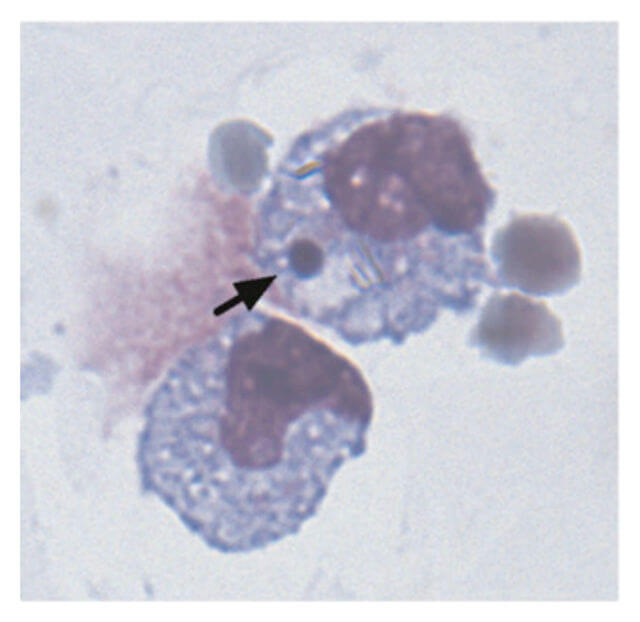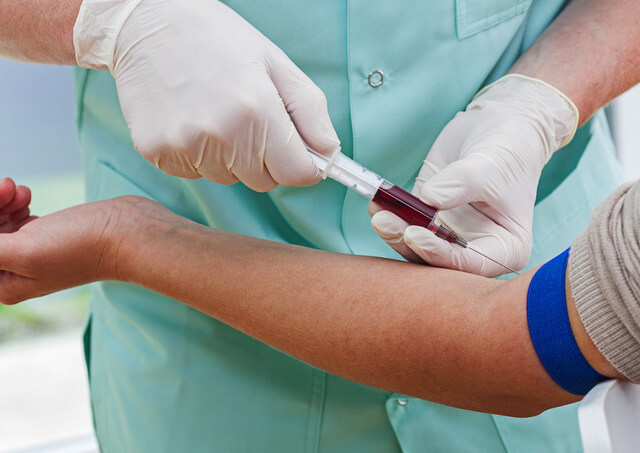Forum Replies Created
-
AuthorPosts
-
 Keith TaylorParticipant
Keith TaylorParticipant
Before I start summarizing research, I found a couple of related studies that might offer some good practical advice. Of course, these are not specific FFA studies. But, the practical effects might end up by being explained by FFA research. Though, even if these are unrelated, they are both valuable to Gout Dieters.
1. Should the DASH Diet Be Recommended for Gout Patients?
Conclusion. For participants with SUA levels > 7, an average reduction in serum uric acid of 1.29 mg/dL can reasonably be expected from implementation of a DASH-type diet.
(side note: I need to update my existing DASH diet and gout article to reflect this study.)
2. Effects of Lowering Glycemic Index of Dietary Carbohydrate on Plasma Uric Acid Levels: The OmniCarb Randomized Clinical Trial.
Conclusion. Reducing the glycemic index lowers uric acid levels. Future studies should examine whether reducing the glycemic index can prevent gout onset or flares.
Interesting how this supports my notion that anyone who thinks gout control is all about purines has lost the plot.
 Keith TaylorParticipant
Keith TaylorParticipantLance, I believe there is a complete breakdown of logic in some aspects of current recommended practice for gout management.
On the one hand, all the latest research warns of the dangers of long-term excess uric acid. Also, other gout research tells us of the benefits of prompt treatment. Yet, the recommendation to start uric acid lowering therapy is to wait for a second gout flare within a year.
I agree with you, Lance, that it is best to do something immediately. You quite clearly have gout. So, the question is do you accept you must lower uric acid?
To explain, I think your gout diagnosis is clear. But, your recommended treatment plan is not fully agreed with your doctor. So, in this sense, you are a rare case. Because there are many more gout sufferers who go down the gout diet route. When, really, they should be thinking about temporary uric acid lowering to prevent more damage until gout diet works. But, those are long term gout sufferers. So, I suggest we turn that on it’s head.
To clarify, I suggest you class yourself as Gout Dieter for now. Or , Gout Herbalist, if you prefer. Then, if we’re lucky, we might see enough improvement in your uric acid levels without starting medical therapies.
Finally, apologies again about my lack of direction in these services. I got it wrong. I thought I could create documentation based on real gout diaries. But, it seems I have to formalize and encourage to get more committed member examples. I guess it’s very hard to see any immediate benefit of creating daily/weekly records. I need to work on helping gout sufferers see the advantages. So, if anyone has ideas on improving commitment to gout diaries, please add your thoughts in GoutPal Suggestion Box.
 Keith TaylorParticipant
Keith TaylorParticipantHi Lance,
“Not quite sure how to add a post to my diary just yet so I’ll reply to it until I figure it out!”I’m sorry about this. I’m still evolving both gout diaries, and structured help plans. So, I need to focus on refining and documenting the procedures. That is probably going to take a day or two.
Very soon, I’ll convert your opening gout diary post (i.e. this topic) into your own personal gout diary. Once we get that going, we can discuss a structured help plan.
 Keith TaylorParticipant
Keith TaylorParticipantThanks James. If in doubt, start a new topic, unless it relates specifically to something we’ve already discussed here.
 Keith TaylorParticipant
Keith TaylorParticipantIt’s time to stop researching today. In conclusion, it’s very complicated because of the microbiology terminology. But, there has to be a simple explanation. I’m not sure how far my gate analogy will stretch:
Which means: Gout attacks are caused by uric acid crystals. Because they start the foundation of acute inflammation. However, to start the actual inflammation, they need someone to open the gate. FFAs can open the inflammation gate. In contrast, butyrate (and others) can keep the gate shut.
But I think my introduction to acetate tells me something new. If inflammation gets through the gate, there’s the big question of how quickly we can get rid of it. Naturally, our bodies will reduce inflammation, which I’ve learned is called efferocytosis. Apparently, scientists are researching a whole raft of products that can make lots of money by enhancing these natural processes. So, in “How factors involved in the resolution of crystal induced
inflammation target IL-1ß”, Oliviero states:Considering the importance of IL-1 blocking agents in reducing acute attacks, firstly noted with regard to IL-1Ra anakinra, and then to the anti-IL-1β monoclonal antibody canakinumab, every molecule capable to reduce IL-1ß production could represent a potential therapeutic target and have a positive impact on the clinical practice.
So, drug companies have lots of potential for new products to block inflammation. Also, lots of new products for resolving inflammation quicker if it hasn’t been blocked. But, these are all based on better scientific understanding of how we naturally deal with inflammation. So, isn’t it easier just to eat right?
 Keith TaylorParticipant
Keith TaylorParticipantI missed the press release on that gout research:
This work is an elegant example of how tuning of inflammatory circuits by linking diet to microbial products can have a profound effect on an inflammatory disease in the joints. Future work may allow such findings to be translated into practical treatments for gout and other diseases.
Do your inflammatory circuits need tuning?
 Keith TaylorParticipant
Keith TaylorParticipantBy Heck[*], this is getting exciting. Except, it’s sad all these mice are suffering.
In conclusion, a high-fiber diet or one of its metabolic products, acetate, controls the inflammatory response to MSU crystals by favoring the resolution of the inflammatory response. Our studies suggest that what we eat plays a determinant role in our capacity to fine tune the inflammatory response.
Don’t we all want to fine-tune our inflammatory responses? With butyrate and acetate on our side, how can we fail? By the way, I’m sure I spotted somewhere that acetate is destroyed by alcohol. So, I’ll research that further when I get back from the pub.
[*] By Heck is Yorkshire for OMG. 🙂
 Keith TaylorParticipant
Keith TaylorParticipantSteve, can I ask about:
I am trying Allopurinol again to see if I my liver can do better this time. My rheumatologist advised that I start at 100mg a day, go to 200 after two weeks and then 300 after two more additional weeks. Then get tested again.
That seems to say you only get tested after the 2nd dose change. But, safe allopurinol prescribing says you get blood tests after 2 weeks, then change dose according to those results. To clarify, those blood tests should be uric acid; kidney function; and liver function.
So, please can you clarify your exact allopurinol treatment plan.
 Keith TaylorParticipant
Keith TaylorParticipantI missed a relevant gout study.
Low omega-3 fatty acid levels associate with frequent gout attacks: a case control study. Unfortunately, it’s another study of mice:Thus, omega-3 fatty acids have the potential of preventing acute attacks of gout. However, the association between omega-3 fatty acid levels and frequency of gout attacks has not been examined in humans.
 Keith TaylorParticipant
Keith TaylorParticipantI’m getting a sense that @d-q and @nobody are discussing 2 different meds here. James is talking about his allopurinol, and nobody is talking about Mark’s Aleve. Both make sense. But only if you split this topic into 2 different threads.
So, here’s a gentle hint. Instead of typing “the medication”, give it a name. Both the meds we are talking about have less characters. So, as well as achieving clarity, you save some finger energy.
You can use some of that saved finger energy to stick 2 of them up at me! 🙂
Please tell me you read the “at” in my previous sentence! 😀
 Keith TaylorParticipant
Keith TaylorParticipantGreat question, Mark:
My question is – does your UA% go up during debulking?
To me, logic dictates that it must go up slightly, unless uric acid excretion rises to compensate. That’s the opposite of the phenomenon we often see in diagnostic uric acid tests during gout flares. By which I mean blood uric acid drops during gout flares. Because uric acid has gone from the blood into crystals.
Unfortunately, I can’t find any specific gout studies that show uric acid levels when crystals are dissolving. So far, the most useful report I’ve found is “Gout treatment: Should we aim for rapid crystal dissolution?”:
Monosodium urate crystal deposition in gout precedes the first attack and, while hyperuricaemia persists, it grows and expands to other sites. Fortunately, it is reversible and slowly dissolves when serum uric acid (SUA) is lowered below its saturation point of about 6.8 mg/dl [400μmol/L] and with certainty below 6 mg/dl. Crystals finally disappear from joints, taking longer in those patients with longer disease duration, probably because of a larger accumulated load of crystals. The SUA level achieved affects the velocity of crystal dissolution and tophi reduction. Accordingly, by deciding the SUA level cut-off point to be achieved by treatment we are determining the time of crystal disappearance and cure of gout. 6 mg/dl is the usual target level, but lower levels appear appropriate to us, particularly in certain situations.
So, that seems to be consistent with your gout recovery, Mark. In your situation, as a champion Gout Dieter, 5.5-6 should be effective. As nobody says (below), you may need patience. But, gout recovery is on your horizon.
In James’ case, I think it’s more borderline. 388 is too close to the 400μmol/L upper limit. In particular, as an allopurinol patient, there’s no need to settle for long periods of gout recovery that Gout Dieters may have to endure.
For readers confused by the scales, there’s a handy multi-colored chart in the sidebar. Or, use my Uric Acid Concentration Conversion calculator.
 Keith TaylorParticipant
Keith TaylorParticipantIt’s good to see that Mitigare is finally getting recognized more. It’s a licensed brand of colchicine that’s cheaper than Colcrys. If more gout sufferers bought it, it might bring down the cost of Colcrys. I wrote about Mitigare last year.
 Keith TaylorParticipant
Keith TaylorParticipant Keith TaylorParticipant
Keith TaylorParticipantHi Larry,
Please can you post a link to what you’ve been reading about gout and warfarin.
 Keith TaylorParticipant
Keith TaylorParticipantSorry, Emily, but I don’t know what you mean by that. How can you absorb purines? Perhaps you can post a link to what you have read. Then, I might be able to explain it.
But, corned beef with cabbage??? Surely it should be smoked gammon? 😀

Make with more cabbage, less ham.
 Keith TaylorParticipant
Keith TaylorParticipantSalmon isn’t particularly bad. Just limit to 4oz portion, no more than twice a week. How can I make food that I like, better for my gout?. Eat with 4 times the amount of veg, compared to salmon.

Make with less salmon and more veg.
 Keith TaylorParticipant
Keith TaylorParticipantPersonally, I don’t think steroids such as prednisone have a place, but that obviously depends on personal circumstances.
Where pain control is take as a preventative, it is best to start the day before starting allopurinol. But, if pain control is “as required”, then start allopurinol first.
-
AuthorPosts


